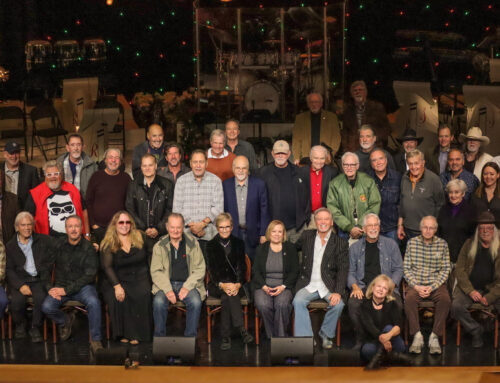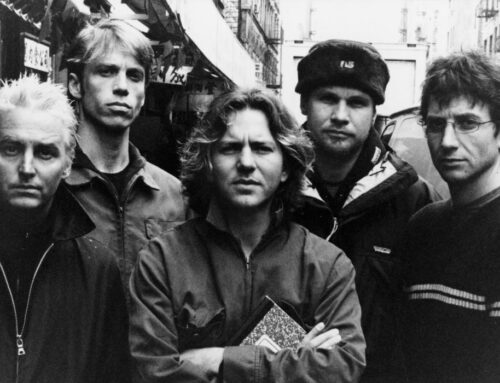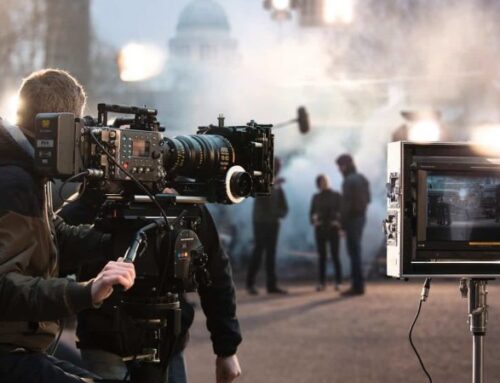OR, What’s in a Name? Personal Names as Trade Names REMIXED.
By Barry Neil Shrum, Esquire (with Ashley Trout)
“That which we call a rose by any other name would smell as sweet.”
You may know this quote from William Shakespeare’s classic play Romeo and Juliet or from the more “pop-culture” reference by Anne Hathaway in The Princess Diaries, but chances are you’ve heard it countless times before. A name is a sense of originality and persona. It is what gives us our sense of identity and belonging. Some psychologists and sociologists believe that people with certain names, such as Curt, David and Jeff, receive more positive affirmations in life than persons with less desirable names, such as Agatha, Edgar and Mabel, which are more likely to evoke negative messages from teachers, professionals and acquaintances. One study reported in the Journal of Educational Psychology used elementary teachers to grade identical papers on which random positive and negative names were attached and, as you may have guessed already, the papers with the negative names routinely received the lower grade. Now you don’t have to wonder why supermodels and handsome actors have the most unique and appealing names! But Shakespear was perhaps trying to imply that it is the essense of the rose that matters, not its name.
One of the more popular articles on my blog dealth with this issue: What’s in a Name? Personal Names as Trade Names, written by my then-colleague, James H. Harris III for what was then a physical newsletter version of Law on the Row. In it, Jim elucidates the user of personal names a marks or trade names in business. I felt it was time to reexamine the issue in the light of celebrities, and extend the discussion to the rights of publicity sometimes also associated with a name. So, the subtitle of this article is appropriately What’s in a Name? Personal Names as Trade Names REMIXED.
 The bottom line is that some names are more unique than others, but your name is what makes you uniquely “you.” So, what happens when someone “steals” our name? With the billions of people in the world, the chances significant that there is at least one other person who is walking around with the same name as you. Is there anything that a person can do to protect their “unique” identifier?
The bottom line is that some names are more unique than others, but your name is what makes you uniquely “you.” So, what happens when someone “steals” our name? With the billions of people in the world, the chances significant that there is at least one other person who is walking around with the same name as you. Is there anything that a person can do to protect their “unique” identifier?
What happens, for example, when someone tries to take a name like “Heidi Klum” or “Albert Pujols”? Key figures or celebrities that, when you say their name, a certain image comes to mind. Or, perhaps the name evokes an event: mention the name Charlie Sheen, and you will likely think not only about his image, but more about his recent escapades surrounding his departure from Two and Half Men.
A very good example of this power of a name to evoke strong messages is the name “Sarah Palin.” Whatever your political opinion, whether you love Sarah Palin the Alaskan Governor/Vice Presidential candidate or whether you hate her, the name “Sarah Palin” evokes very strong thoughts, associations and yes, feelings. Look at the photographs associated with this article. What kind of feelings does that evoke in you? If you thought either was the real Sarah Palin, you are wrong. They are both actually impersonators – and different ones to boot! Yet, the images evokes the association and the feelings that make you think of the real Sarah Palin and her personal idiosyncrasies.
Sarah Palin is, of course, an American politician, formerly governor of Alaska, but best known as John McCain’s “choice” as the Vice President candidate for the Republican Party in the 2008 election. She is best remembered for her “cowgirl” image, folksy humor and distinctive, if annoying “wink”: but she is often also associated with her completely ineffective interview with Katie Couric that some say cost the Republican party the election that year – an interview greatly publicized by an impersonator.
Since the 2008 election, Palin has become a fixture on the Fox News networks. Whether she is expressing her opinions about issues such as abortion or gun control, Palin is anything but shy in making her voice heard. The result of all this pu blicity, of course, is that her television and cable “Q Score” has increased significantly.
blicity, of course, is that her television and cable “Q Score” has increased significantly.
With a character as polarizing as Palin, the result is often a proliferation of impersonators. It did not take long in the case of Palin – immediately subsequent to the interview – for Tina Fey to begin imitating the Couric interview on the Saturday Night Live. Impersonators, of course, trade off the personalities and idiosyncrasies of the imitated celebrity or public figure. Since the days of Rich Little, and his current replacement Frank Caliendo, the art of imitation has been a popular part of American pop culture. There is no doubt that Ms. Fey’s notoriety increased as a result of her performances. Imitation may be the most sincere form of flattery, but can it go too far? According to Sarah Palin and her handlers, it already has!
Tina Fey was just the first in a long line of Sarah Palin impersonators. Many people have since taken it upon themselves to impersonate Sarah Palin and trade on her persona, including perhaps the best known of the tribe, Patti Lyons and Patsy Gilbert. See, infra. So, the question is “Can Palin stop this type of activity?”
Not to sit on the fence, but the answer is maybe! Perhaps more precisely, she will be able, in a somewhat limited way, to enforce certain aspects of her persona and, in an even more limited way, the use of name in connection with certain services and/or goods.
We must first look to trademark, not copyright, for the answer to our quest. According to the U.S. Patent & Trademark Office, a trademark is a “word, phrase, symbol, or design, or a combination thereof, that identifies and distinguishes the source of the goods of one party from those of others.” Whenever you see the Golden Arches looming in the air, you immediately associate it with the burgers made by Mickey D’s – both trademarks of the McDonald’s corporation.
Likewise, whenever you hear the name “Sarah Plain,” chances are you picture a woman with long brown hair, most likely pulled back, thigh-length boots, and a pair of Kazuo Kawasaki 704 designer eyeglasses. Perhaps you see that aforementioned hackneyed wink she was so fond of using during the televised vice-presidential debates with VP Joe Biden. Whatever you see, the image of Sarah Palin is a very unique and distinctive image. And, more importantly, it is an association engrained in our minds.
So, since the image and name are so synonymous, does it follow logically that Sarah Palin can copyright her name? According to U.S. Copyright Law and historical interpretations thereof, it is well-established answer is “no, she cannot.” Since its creation by our Forefathers, the Copyright law has never protected mere “ideas.” In fact, Jefferson stated flat out that “ But this doesn’t mean Palin is without protection all together. In the United States, celebrities like Palin and others can protect their name, through trademark laws, and their persona, at least in 28 of the 50 states, through state laws governing rights of publicity. Sarah Palin has opted, at least initially, to use trademark law to protect here interests in her moniker. In an article by the Christian Science Monitor , she acknowledged filing for a trademark application for her name in International Classification 41 for “educational and entertainment services, namely, providing motivational speaking services in the field of politics, culture, business and values” and in IC35 for “Information about political elections; Providing a website featuring information about political issues.” The application is Serial Number 85170226 and the mark was approved for publication and the review of that publication was completed on April 12th. Likely the marks will issue within the next few months. The thing to understand here is that it is not an uncommon practice among celebrities who want to enforce their intellectual properties, namely their persona or publicity rights, and prevent others from using their identifying features in similar trades and endeavors. Filing a trademark application for use of their name in connection with certain services and goods is, in fact, extremely common for celebrities and I often advise my clients to take such action. Currently, back in Sarah Palin’s world, there are two well-known figures impersonating her: Patti Lyons and Patsy Gilbert. Patti Lyons seems the most aggressive of the two, although both have been successful. In a Yahoo article, it was reported that Lyons showed up at a recent event in Washington, D.C. knowing that Palin would not be present. Lyons impersonated Palin by dressing like her and making an appearance. At the event, she deceived the crowd into thinking she was Palin. Lyons spoke with her “fans” at the event and even those people were unable to detect the ruse. Lyons travels the country doing the impersonation with “fair and balanced” political comedy, and allegedly appeared onstage with Bill Clinton and Barack Obama. Lyons also has a website dedicated to her Sarah Palin impressions and is in negotiations with A&E for a special. Other impersonators, like Patsy Gilbert for example, have similar websites. But even if Sarah Palin is successful in registering her trademark on the Primary Register, does that enable to prevent these impersonators from practicing their trade? Maybe, maybe not. As our examination of protection moves further down the tracks, we have to reference a person’s right of publicity. Unlike copyrights, trademarks and patents, there is no uniform federal law that governs the intellectual property right of the right of publicity. This right is based partly in common law, but also, as noted earlier, has statutory representation in 28 states. The problem is that there is very little uniformity among these state statutes, which range from 50 years in Illinois Cf. Ill. Comp. Stat. § 1075/30 – the most protection – to as little as 10 years at a time in Tennessee, for example. Illinois’ neighbor, Indiana, gives protection for as long as the publicity rights are continuously transferred! Cf. Ind. Code § 32-36-1-16. To quote another celebrity, can you say “to infinity and beyond?” But don’t get me started on the rights of cartoon figures, lest I digress. The right of publicity is essentially the inherent right of every human being to control the commercial use of his or her identity, in some state even after their death! Some courts view this as a “moral” right, in line with the natural rights philosophy of John Locke, arguing that a celebrity’s identity is the fruit of his or her labor and creates property entitled to legal protection. See McFarland v. E & K Corp., Civil No. 4-89-727, 1991 U.S. Dist. Lexis 1496, at 4 (D. Minn. 1991). Using this property right, celebrities may protect the commercial use of their persona, including their name, voice and personal characteristics, limiting their exposure and/or seeking compensation for their use. Many of these laws, however, only prevent limited types of commercial use. Tennessee has a right of publicity statute which gives Tennessee residents “ a property right in the use of his name, photograph or likeness in any medium and in any manner.” Cf. Tenn. Code Ann. §47-25-1103, et. seq. In a case of first impression, Tennessee’s Supreme Court examined the statute in the context of a Beatles tribute band, i.e.¸a group of impersonators. The imitators dressed liked the Beatles, performed – remarkable close in sound – to the Beatles and, most importantly, advertised their concert using a pose similar to the one the actual Beatles use on the American version of the album, A Hard Day’s Night. The impersonators called themselves “1964 as the Beatles.” The court ultimately ruled that the band could perform as impersonators, but could not use printed advertisements that evoked the persona and look of the original Fab 4. The court found that the impersonators’ use of the mark, The Beatles, in their name, and their use of the composition of the famous album cover in their marketing materials, was likely to create confusion for consumers. The court therefore issue an order containing prohibitions on using of the names “John,” “Paul,” “George,” and/or “Ringo” in advertisements, using their likenesses in advertisements, or using their famous mark, “The Beatles” in advertisements. The prohibition, the use of the mark, was extended to apply to the live performances, or stage name, of the impersonators. The band subsequently changed its named to “1964 the Tribute” and has gone on to moderate success. The Tennessee court relied heavily on a New York case involving Jackie Onassis and Christian Dior. Jacqueline Kennedy Onassis v Christian Dior, 472 N.Y.S.2d 254 (1984). The latter had used an impersonator of Onassis for a print advertisement. In the ruling the court stated: We are dealing here with actuality and appearance, where illusion often heightens reality and all is not quite what it seems. Is the illusionist to be free to step aside, having reaped the benefits of his creation, and permitted to disclaim the very impression he sought to create? If we were to permit it, we would be sanctioning an obvious loophole to evade the statute. The essential purpose of the statute must be carried out by giving it a common sense reading which bars easy evasion. The court found that the designer had violated Ms. Onassis’ right of privacy under the New York right of publicity statute So, what is the bottom line for Sarah Palin. Once she successful obtains the registration of her marks, will she be able to prevent Ms. Lyons and her ilk to stop using her persona and her name? Again I say, maybe yes, maybe no. She will most certainly be able to prevent others from benefiting commercially from the use of her trademark and service mark in connection with her specified goods and services. But there is one more factor that may come into play with regard to Ms. Palin. In America, we uphold certain Constitutional principles to be paramount to property monopolies, particularly those of the intellectual types, such as copyright, trademark and, last but not least, rights of publicity. The First Amendment’s guarantee of freedom of speech and the Copyright concept of “fair use” come to mind immediately. Sarah Palin is more than just a celebrity, she is a politician. Ms. Lyon is more than just an impersonator, she is a political humorist. Therefore, in the event that Ms. Palin ends up suing Ms. Lyon in an effort to enforce her newly obtained trademarks, she may very well have to overcome the defenses fair use and freedom of speech. Ms. Lyons has a constitutional right to imitate Ms. Palin in an effort to “comment upon” the state of politics in this country. However, her website, wisely, does not address politics or political issues, it merely offers her services as a humorist – notably a different service from that marked by Ms. Palin. Her URL is “www. But this is where it gets interesting. Reread the New York court’s comment above, and you will struck with its concept that an impersonator should not be allowed to create “an obvious loophole to evade the statute.” Exactly what will Ms. Palin be able to prevent. Do the images of Lyons and Gilbert that appear on their respective websites fall into the same category as the Onassis image and the Beatles cover art? The final answer is that it probably depends on the court and, ultimately, upon which law applies. Some states have more expansive rights of privacy and trademark protections. This will certainly be an interesting case to follow as it winds its ways through the courts. Guest co-author, Ashley Trout, is a sophomore at Belmont University’s Mike Curb School of Music with an emphasis in music business. Ashley graduated Freeburg Community High School (Illinois) in 2009. She prepared the original draft of this article as part of an assignment for Mr. Shrum’s Copyright Law class. She enjoys all things Disney and Harry Potter! sarahpalinimpostor.com,” while Ms. Gilbert’s URL is “www.sarahpalinimpersonator.com,” arguably not likely to confuse anyone into thinking these are associated with the real Ms. Palin – in fact, they arguable connote the opposite! So it will be unlikely that the real Sarah Palin will be able to prevent their usage of her name in that context.
sarahpalinimpostor.com,” while Ms. Gilbert’s URL is “www.sarahpalinimpersonator.com,” arguably not likely to confuse anyone into thinking these are associated with the real Ms. Palin – in fact, they arguable connote the opposite! So it will be unlikely that the real Sarah Palin will be able to prevent their usage of her name in that context.





